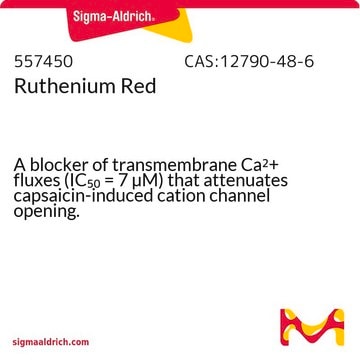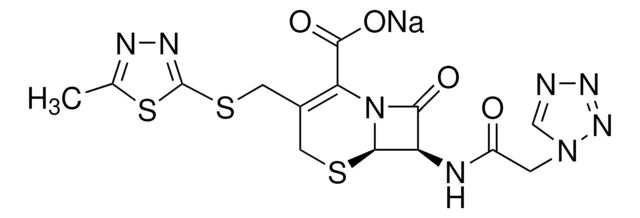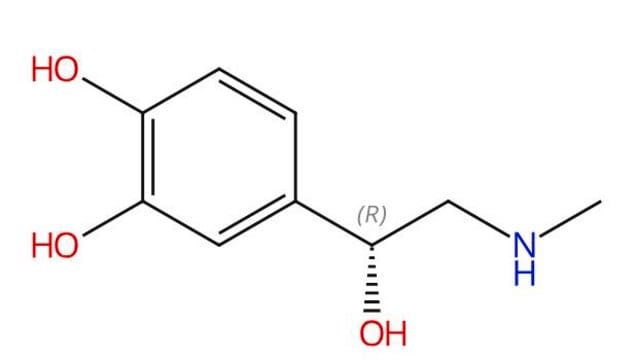E9156
Encainide hydrochloride
≥98% (HPLC), powder
Synonyme(s) :
(+/-)-4-Methoxy-N-[2-[2-(1-methyl-2-piperidinyl)ethyl]phenyl]benzamide hydrochloride, MJ-9067
About This Item
Produits recommandés
Essai
≥98% (HPLC)
Forme
powder
Solubilité
H2O: >25 mg/mL
Auteur
Bristol-Myers Squibb
Température de stockage
2-8°C
Chaîne SMILES
Cl.COc1ccc(cc1)C(=O)Nc2ccccc2CCC3CCCCN3C
InChI
1S/C22H28N2O2.ClH/c1-24-16-6-5-8-19(24)13-10-17-7-3-4-9-21(17)23-22(25)18-11-14-20(26-2)15-12-18;/h3-4,7,9,11-12,14-15,19H,5-6,8,10,13,16H2,1-2H3,(H,23,25);1H
Clé InChI
OJIIZIWOLTYOBS-UHFFFAOYSA-N
Informations sur le gène
human ... SCN10A(6336) , SCN11A(11280) , SCN1A(6323) , SCN2A(6326) , SCN3A(6328) , SCN4A(6329) , SCN5A(6331) , SCN7A(6332) , SCN8A(6334) , SCN9A(6335)
Actions biochimiques/physiologiques
Caractéristiques et avantages
Mention d'avertissement
Danger
Mentions de danger
Conseils de prudence
Classification des risques
Acute Tox. 3 Oral - Eye Irrit. 2 - Skin Irrit. 2 - STOT SE 3
Organes cibles
Respiratory system
Code de la classe de stockage
6.1C - Combustible acute toxic Cat.3 / toxic compounds or compounds which causing chronic effects
Classe de danger pour l'eau (WGK)
WGK 3
Point d'éclair (°F)
Not applicable
Point d'éclair (°C)
Not applicable
Équipement de protection individuelle
Eyeshields, Faceshields, Gloves, type P2 (EN 143) respirator cartridges
Faites votre choix parmi les versions les plus récentes :
Certificats d'analyse (COA)
Vous ne trouvez pas la bonne version ?
Si vous avez besoin d'une version particulière, vous pouvez rechercher un certificat spécifique par le numéro de lot.
Déjà en possession de ce produit ?
Retrouvez la documentation relative aux produits que vous avez récemment achetés dans la Bibliothèque de documents.
Articles
Voltage-gated sodium channels are present in most excitable cell membranes and play an important role in generating action potentials.
Filtres actifs
Notre équipe de scientifiques dispose d'une expérience dans tous les secteurs de la recherche, notamment en sciences de la vie, science des matériaux, synthèse chimique, chromatographie, analyse et dans de nombreux autres domaines..
Contacter notre Service technique









